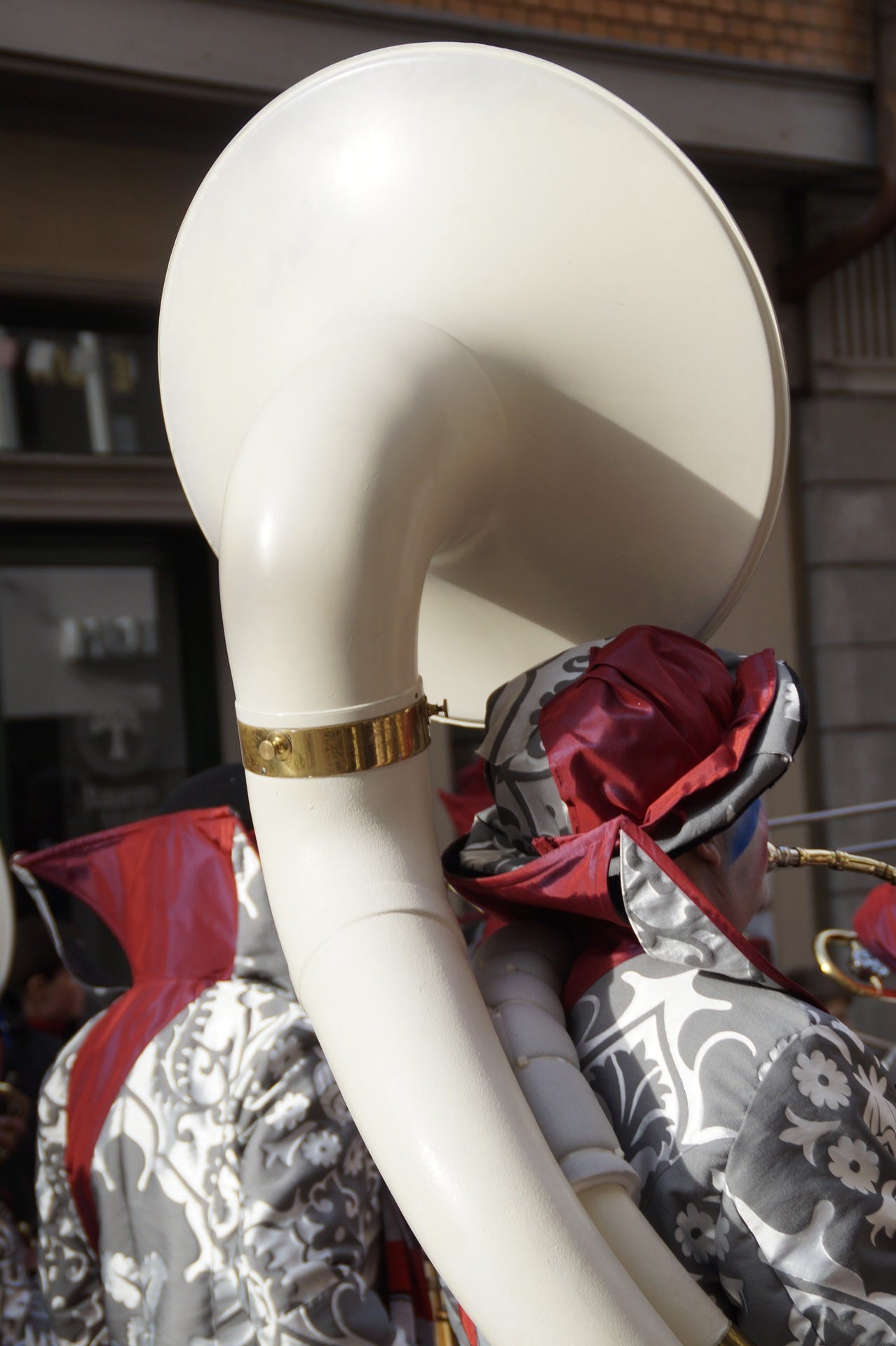The first time I brought home a tuba, I was in middle school. I wanted to play the trumpet, but my band director convinced me to consider the tuba. He even offered to get me a stand to hold the tuba since he felt I was too small to wrangle the behemoth. I briefly imagined what the other kids would say, and I quickly dismissed the offer.
The tuba had a copper, brass, and new instrument smell. If you ever played an instrument, you know exactly what I’m talking about. I pulled it out of its case. At this age, I was small enough to fit inside the casing. I marveled at the instrument, and I couldn’t wait to learn how to play.
Many factors affect a tuba’s tone. An understanding of basic acoustics goes a long way toward understanding this rumbling beast. The tuba uses a series of welded brass tubes that create resistance, making it possible to direct air through the horn. This creates vibrations that the tuba amplifies, and the alloys used in the creation of the tuba generate the sound. This is why a gold-plated tuba projects a different sound than a silver-plated tuba.
Vibrations
Acoustic instrument sound begin with a vibration that creates pitch. Vibrations travel through the air causing the eardrum to transfer sound vibrations to three small bones known as ossicles in the middle ear. Vibrations occur anytime you hit, move, or act upon an object by force. In the case of the tuba, the vibrations initiate from the buzzing of the lips. When I was younger, I used to walk around buzzing non-stop, which I’m sure delighted my parents.
Mouthpiece
The mouthpiece of the tuba creates a powerful, narrow, and focused sound by sending a quick stream of air through the instrument.
Mouthpiece materials play a large part in the timbre or the characteristic sound of the instrument.
Brass mouthpieces create a strong, brassy tone, while silver mouthpieces create more mellow, soft tones.
Steel mouthpieces emit stronger tones, and gold mouthpieces create soft, supple tones.
Plastic mouthpieces provide a thinner sound, but they provide an option for extreme temperatures when playing outdoors. Nobody wants a tuba stuck to their face in the bitter cold. Plastic mouthpieces provide a useful purpose, but performers avoid them unless needed.
The tubist develops specialist knowledge over time. The mouthpiece choice depends largely on the style of music and the environment.
Tubing
The size and materials of the tuba impact the sound the tuba creates. The tubing consists of brass alloys, which include a combination of copper, nickel, and zinc. Depending on the type and percentage of alloys used, the tuba will have a different sound. or timbre.
Nickel gives the tuba a softer sound, while copper provides the tuba with an edgier brassy sound.
The bending of the tubes makes it easier to play the tuba by creating some resistance. Without the many coils in the tuba, the performer would need several lungs to produce a sound. Without bendy tubes, you get no air resistance. This would make playing this large instrument extremely difficult. The resistance makes it possible to play the tuba.
Bell
The bell’s position somewhat directs the flow of sound into a room. Most tuba bells point directly up. Somewhere along the line, a sadist decided it was necessary to march with a tuba, and this spawned the sousaphone. The first time I had to carry a sousaphone, the band director had to lift it over my head. It was simply too heavy to pick up myself, but hey, as long as I didn’t sit down, I could march.

Sousaphone bells point directly forward. This ensures that the sound projects into the audience. Since sousaphones perform outside, the bell directs the sound into the audience.
In concert halls, the bell points upwards and various diameters exist. Bells that have a narrow outwards flare and small diameter tend to have a more precise sound. The bells that flare outwards with a larger diameter produce a great, booming tuba sound.

Comments
Post a Comment